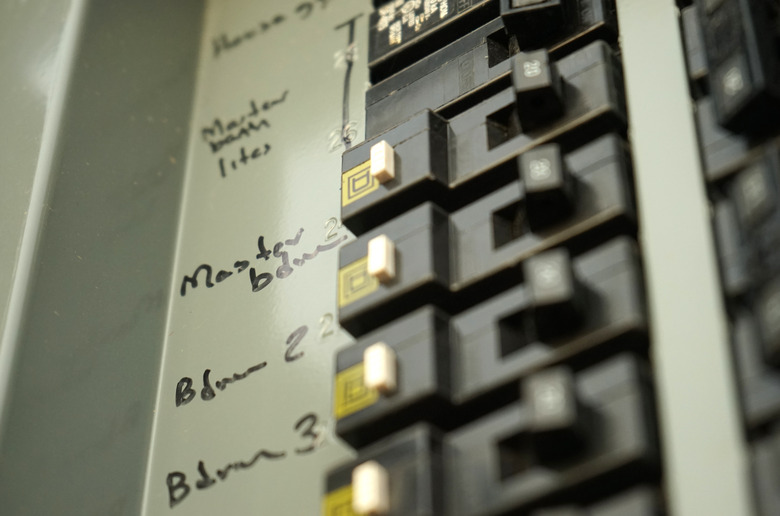What Causes A Circuit Breaker To Get Hot?
The circuit breakers in your home's electrical panel are there to protect you and your home from fires. All the electricity you use passes through them, and each one has a temperature monitoring device that shuts off the breaker when the temperature rises too high. It's normal for a breaker to feel warm when current is passing through it, but it should never feel hot. If it does, and you're sure it's securely anchored to the panel and the wires are tight, there's probably something wrong with it. If the breaker is bad, the lights on the circuit may be flickering because circuit breaker failure is often indicated when lights flicker off and on circuit breaker doesn't trip. The best course of action is to replace the breaker.
How Hot Is Hot?
How Hot Is Hot?
The circuit breaker ambient temperature rating is determined by Underwriters Laboratories. Standard breakers should get no hotter than 90 degrees Fahrenheit or 50 degrees Celsius above the ambient temperature. The heat inside a breaker is generated by electrical resistance as power passes through the contacts and the bimetal trip device. In normal conditions, the sides and back of the breaker get warmer than the knob. Most circuit breakers have plastic knobs, and the maximum temperature of the knob should be no higher than 185 degrees Fahrenheit or 85 degrees Celsius. Practically speaking, however, a hot breaker switch is one that is noticeably hot to the touch.
The Most Common Cause of a Circuit Breaker Getting Hot
The Most Common Cause of a Circuit Breaker Getting Hot
Electrical resistance increases at points of loose connection and that generates heat. This means that your overheated breaker may simply be loose. When installing a breaker, you have to give it a good push to seat it on the clip that holds it to the bus bar. If the breaker isn't seated properly, one end will protrude slightly. Push in that end until you hear the click of the breaker seating securely. If the breaker is already seated, the problem may be that the wire connected to it is loose. Pull out the breaker and tighten the lug that holds it using a screwdriver.
Remember when working in the panel that the hot bus is always energized, even when the main breaker is off. Wear rubber-soled shoes and rubber gloves when checking the breakers and use tools with insulated handles. If you aren't comfortable working with electricity, get a pro to check your breakers because there's enough power in the panel to seriously injure you.
The Current May Be at the Limit
The Current May Be at the Limit
A breaker is designed to shut off when the current that passes through it exceeds its rating, but it may get unusually warm without tripping if the current remains at or just below the rating. In the case of a 240-volt, 50-, 40- or 30-amp breaker getting hot, the appliance powered by the circuit may be at fault. Appliances that cycle on and off generate consume extra power when the motor switches on. If the cycle repeats too often, it could be a problem with the appliance, such as a problem with the motor.
The Breaker May Be Bad
The Breaker May Be Bad
A hot breaker switch, when accompanied by flickering lights or intermittent power on the circuit, indicates a bad breaker. This is a common problem with certain types of breakers, such as Federal Pacific Stab-Lok and Zinsco-Sylvania, but it can happen with breakers from other manufacturers, as well. The remedy is to replace the breaker. If you're having similar problems with the other breaker in the panel, it's time to upgrade to a more modern unit.
